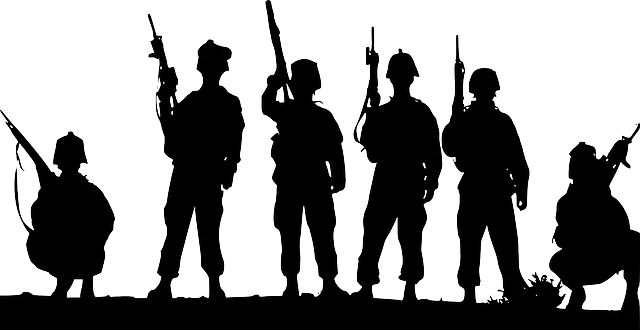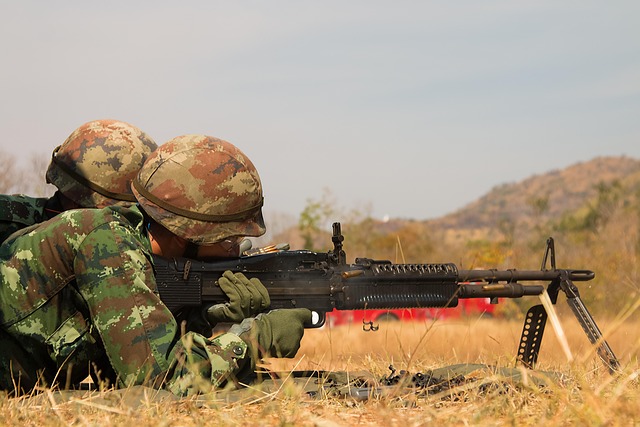The US Army Reserve Flag, with its vibrant colors and symbolic design, represents dedication, honor, and sacrifice, fostering pride among reservists past and present. The folding ceremony, a poignant ritual, signifies the transition from active to reserve status, honoring soldiers' commitment and service through 13 meticulous folds symbolizing the original colonies, culminating in a triangular shape echoing the US Constitution. This ceremonial act, rich in symbolic meaning, transcends respect, embodying core military values while evoking emotions from pride to sorrow, fostering camaraderie among servicemen and women.
“The folding of the US Army Reserve Flag is more than a ceremony; it’s a profound expression of respect and patriotism. This ritual, often performed during military events, carries rich symbolism and historical significance. Delve into our exploration of the US Army Reserve Flag, its intricate design, and the meaningful tradition behind its folding. We’ll break down the precise steps, uncover the emotional resonance, and highlight why this ceremony remains a powerful symbol of honor for Army Reserve members.”
- Understanding the US Army Reserve Flag: Symbolism and Significance
- The Folding Ceremony: A Tradition Rich in Meaning
- Steps Involved in Folding the Flag with Precision
- The Emotional Impact: Why This Ritual Matters
Understanding the US Army Reserve Flag: Symbolism and Significance

The US Army Reserve Flag is more than just a piece of fabric; it’s a powerful symbol of military service, sacrifice, and camaraderie. This distinctive flag, characterized by its unique design and vibrant colors, holds immense significance for the Army Reserve community. The flag’s layout incorporates elements that represent various aspects of the US Army Reserve’s mission and values. For instance, the blue field signifies the unwavering dedication and loyalty of its members while the white background symbolizes purity and honor. Red stripes emphasize the blood, sweat, and tears shed by reservists in service to their country.
The flag also serves as a poignant reminder of the deep-rooted history and heritage of the Army Reserve. Its design pays homage to the sacrifices made by past generations, fostering a sense of pride and camaraderie among current and former reservists. During folding ceremonies, the deliberate and respectful folding of the flag echoes the dedication and folding of hearts belonging to those who have served or are serving their country proudly. This ritualistic act underscores the profound respect and gratitude owed to the US Army Reserve Flag and its representation of America’s military spirit.
The Folding Ceremony: A Tradition Rich in Meaning

The folding ceremony, a poignant ritual, is an integral part of honoring and remembering those who have served their country, especially during the US Army Reserve Flag retirement ceremonies. This traditional practice involves the meticulous folding of the flag into its smallest size, symbolizing the transformation of active service to reserve status. Each fold carries a specific meaning, reflecting valor, sacrifice, and loyalty—a silent testament to the commitment of the soldiers who have donned the uniform.
The US Army Reserve Flag, once proudly displayed, is treated with the utmost respect as it undergoes this ceremonial folding process. It becomes a physical representation of the transition from active duty to a reserved position, marking a significant chapter in the military journey of these individuals. This simple yet powerful ritual ensures that the service and dedication of the Army Reserve members are recognized and forever etched into the memory of those present.
Steps Involved in Folding the Flag with Precision

The folding of the US Army Reserve flag is a ceremonial act filled with purpose and precision, honoring our nation’s military heritage. This solemn ritual begins with the flag laid flat on a table or stand, ensuring it’s fully unfurled and visible to all participants. The first step involves carefully folding the flag in half lengthwise, bringing one edge towards the center. Then, fold it again, creating a long strip, and continue folding it accordion-style until it forms a compact rectangle. Each fold holds symbolic meaning—the triangles formed represent the 13 original colonies.
As the flag nears its final form, the ceremonial folder must pay meticulous attention to detail. The four corners are then folded inwards, meeting at the center, creating a small, triangular shape. This last step is crucial; it signifies the tri-fold of the US Constitution. Once complete, the flag is secured and presented with the appropriate ceremonies, honoring veterans and active-duty personnel.
The Emotional Impact: Why This Ritual Matters

The folding of the flag, a solemn ritual often featured in ceremonies across various branches of the military, holds profound emotional significance, especially for those serving or having served in the US Army Reserve. It is more than just a display of respect; it’s a visual representation of the values and sacrifices associated with military service. As each fold is executed, it tells a story—a narrative of patriotism, duty, honor, and commitment. This ritual evokes a range of emotions, from pride and gratitude to sorrow and remembrance, as it connects individuals to a larger collective identity.
For members of the US Army Reserve, witnessing or participating in the folding of the flag can be deeply moving. It serves as a reminder of their role in safeguarding the nation and a tribute to those who have made the ultimate sacrifice. This symbolic act fosters a sense of camaraderie among fellow servicemen and women, reinforcing the bonds formed through shared experiences and the common purpose to protect and defend.
The folding of the US Army Reserve Flag during ceremonies is a profound expression of respect and patriotism. By understanding the symbolism, participating in the ritual, and recognizing its emotional impact, we honor those who serve and protect our nation. This time-honored tradition serves as a powerful reminder of our shared commitment to freedom and the values that unite us.
